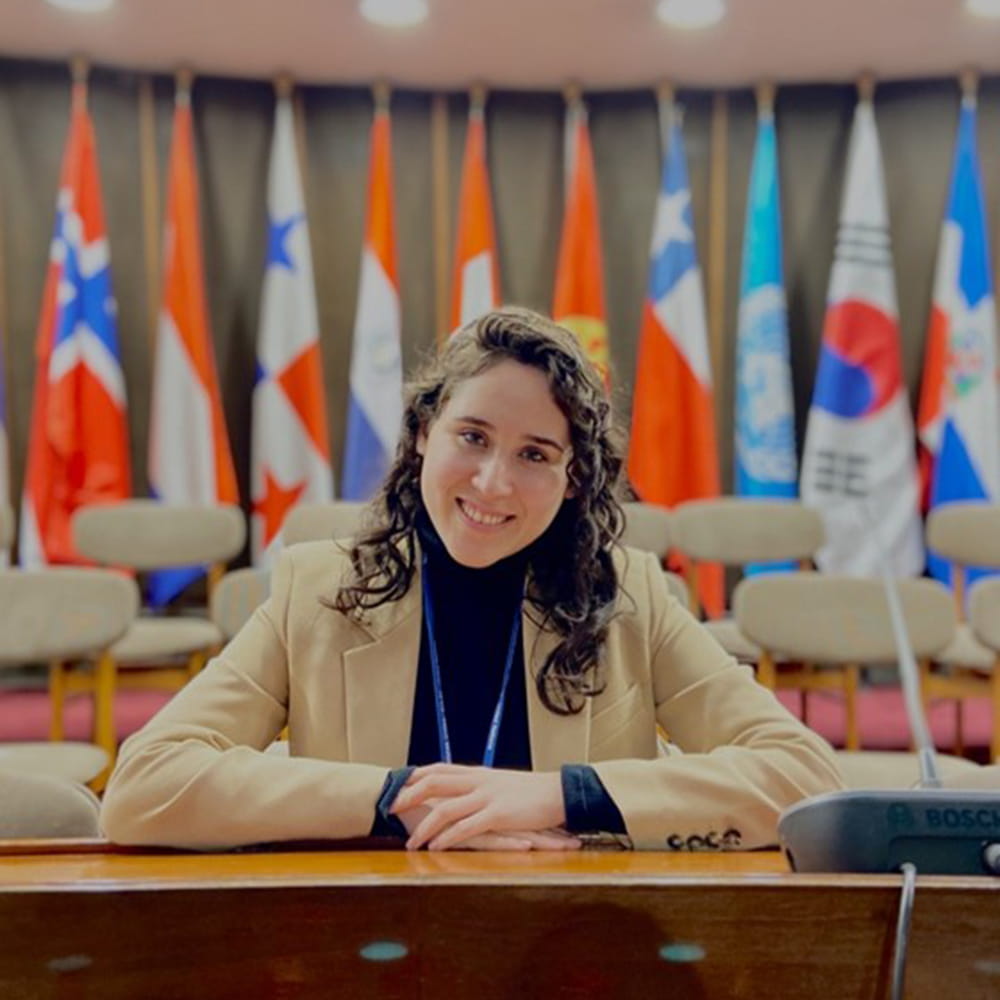Unzipping the reality of the fashion industry: my experience organising the Human Rights in Asia conference
.jpg?mh=1000&mw=1000&hash=E9CAD6E674FE8C2B4F82366789BDF777)
Let’s face it, Asia often gets overlooked when it comes to human rights education in the UK. But the Human Rights Centre is trying to break the mould by organising an annual student-led conference that focuses solely on human rights issues in Asia.
As a student from Chile, I was eager to learn more about Asia and its human rights issues, and, this year, I was part of the organising team of the conference. Besides human rights, I have a huge passion for content creation and social media, and I saw the conference as a way to combine my two passions. My role as communications lead meant that I got to create a diverse range of digital content, including flyers, reels, and Q&A sessions, which we shared on our social media channels.
This year’s conference was its 15th anniversary and we decided on the topic 'Human Rights Impacts of the Fashion Industry in Asia'. We usually hear about the environmental consequences of the fashion industry, but what about the people who make our clothes? The harsh reality is that 80% of garment workers in Asia are women, struggling to make ends meet on wages that don’t even cover their basic needs, and working in unsafe conditions that have led to horrible disasters.
.jpg)
When I sat down to create the drawing for the flyer, I knew I wanted to convey a powerful message about the global fashion industry. What I came up with was a two-floor drawing that not only represented physical levels but also symbolized the deep divide between the global north and south. The first level featured a clothes store window with see-through mannequins wearing identical dresses, each with the same fabric and design. However, they are not meant to be the focus of the drawing.
As we descend to the lower level, an illusion of a zipper adds a layer of secrecy, inviting us to peek into a world that is hidden from us. The women and their bright, colourful clothes immediately catch the eye and reinforce that this is about them. Nevertheless, as we look closer, we see that these women are faceless, their identity reduced to nothing more than a number in a system that values profit over people. This drawing serves as a stark reminder of the harsh realities of the global fashion industry. It shows that those in the global south, who make the clothes for those in the north, are often stripped of their humanity and treated as disposable.
We also got the opportunity to do an Instagram takeover of Essex Law School. The events team at the Law School wanted content that was a bit more personal, so instead of just videos and images, they asked me to record myself giving out some answers for the Q&A. At first, I was a bit nervous but then I was like 'You know what? Why not? Let’s do this!' I got in front of the camera, took a deep breath, and just went for it. It actually felt kind of great!
Even though, we had top notch speakers, it was the opportunity to connect with other students and human rights professionals who share a passion for these issues that made the whole experience unforgettable. As a human rights lawyer, I was thrilled to be part of the organising team and gained valuable practical skills in conference organisation that will serve me in my future career.
If you’re a Master of Laws (LLM) or Master of Arts (MA) student interested in human rights issues in Asia, I highly recommend attending the Human Rights in Asia conference. And if you’re feeling extra ambitious, why not join the organising team for the next conference? Trust me, it’s an experience you won’t forget!
.jpg)
The organising team (left to right): Kotono Takeshita (Japan), Airi Tanabe (Japan), Ericka Regalado (Hong Kong and the Phillipines), Imahue Muñoz Carrasco (Chile), Machiko Aiso (Japan), Yuichi Yamamoto (Japan), and Dr Sanae Fujita, Human Rights Centre fellow (Japan)
